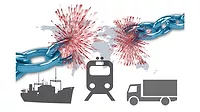Supply Chain
How food manufacturers can use technology to manage supply chains
With lots of moving parts and growing complexities, processors need to keep close tabs on managing product and data throughout the supply chain.

New methods of data capture and gathering are becoming more commonplace in food and beverage manufacturing. Source: IFS.
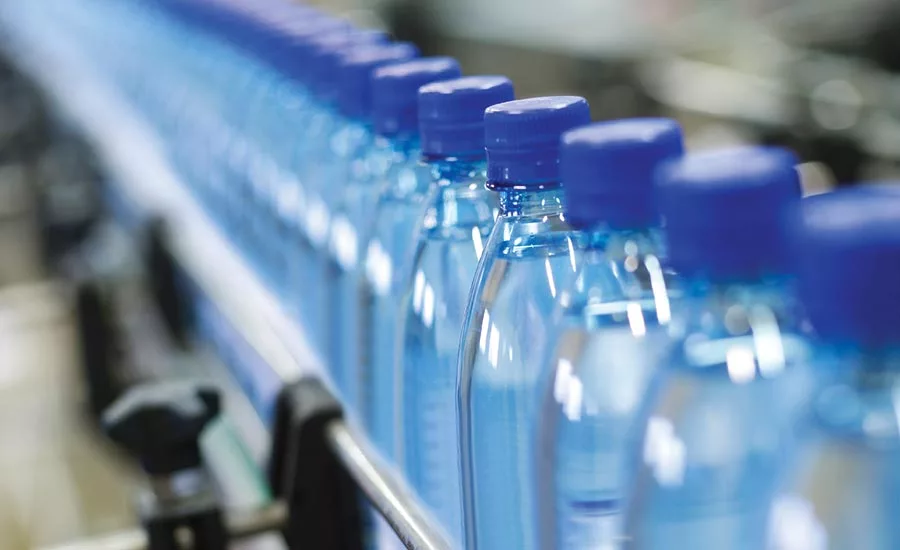
“The food and beverage industry requires dynamic, efficient systems that can manage high volumes of data while responding swiftly to shifting consumer preferences and new regulations,” says Dolphin’s Brian Shannon.
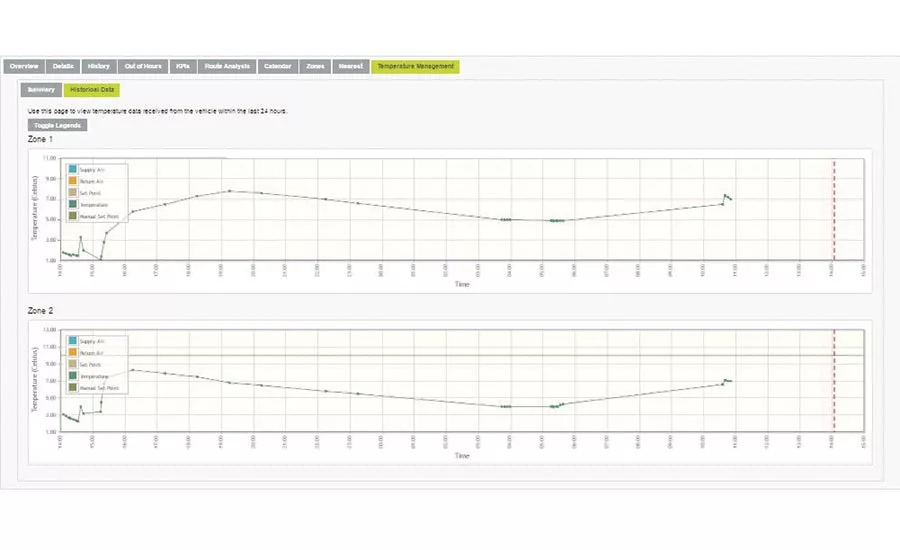
Isotrak’s temperature management solution monitors and manages varying temperature thresholds and safe temperature ranges to ensure food remains at a specified temperature through the duration of a journey. Source: Isotrak.
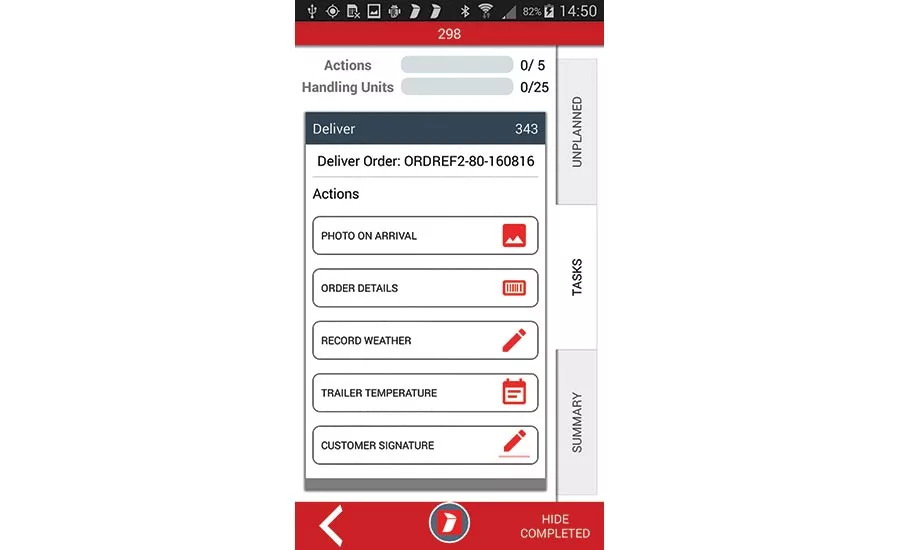
Isotrak’s electronic proof of delivery (ePOD) solution enables drivers to submit customer signatures, shipment photos and other details directly from their mobile devices to Isotrak’s online portal, allowing managers to streamline the collection and filing of delivery reports. Source: Isotrak.
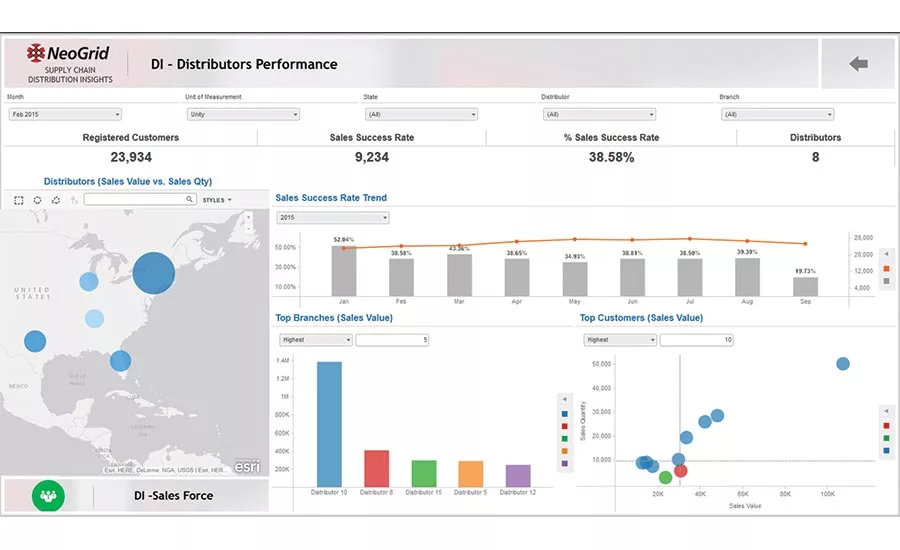
NeoGrid’s “EPOS Visibility - Distribution Insights” electronically collects, consolidates, processes and reports vital inventory and distribution information to better plan sales actions, increase inventory turns, encourage production and detect opportunities for growth. Source:NeoGrid.

“The recipe for success in the food and beverage industry begins with a system that effectively handles high volumes of data and is adaptable to ever-changing demand and regulation,” says Dolphin’s Brian Shannon.
Sometimes keeping it simple, stupid, is way easier, and much more fun to say, than actually doing it. Take the phrase “farm to fork.” The sentiment behind the statement is so intuitive: Let’s get the food from the farmer to the consumer’s dinner table as efficiently and directly as possible. That is, after all, the best way to ensure the food is good and good for the consumer. Actually doing this, however, is not at all easy or simple.
Article Index
- Resilient supply chains
- Automating data management
- Inventory management
- Traceability and audit readiness
- Sidebar: Fleet delivery management
Processors have a lot of moving parts to keep track of, starting with the intake of raw materials and ingredients to making sure the right amount of product gets to the right place. Because many of the products have a limited shelf life, not to mention being under increasing food safety and quality scrutiny, getting the logistics right is crucial. To make matters more confusing, many variables, such as consumer tastes and market fluctuations, can rapidly change and are completely out of the processor’s control.
The optimal flow of food and beverage goods to consumers is vital for brand protection. To ensure the efficiency and performance of food supply chains, the entire end-to-end process, from sourcing to manufacturing to delivery, must be strategically planned and systematically managed. Fortunately, new technology is helping members of the food processing industry improve the management and performance of their supply chains.
Resilient supply chains
To be sure, food and beverage processors are facing a host of challenges.
“The complex processes that characterize the food and beverage industry bring an extensive list of challenges, including low profit margins, perishable products, stringent government regulations and changing consumer tastes,” says Brian Shannon, chief strategy officer for Dolphin Enterprise Solutions Corporation, a provider of SAP (Systems Applications Products) solutions.
Of these challenges, Reinhard Steup, senior manager of supply chain management for HAVI, says consumer demand is the most rapidly changing variable within supply chains.
“Consumers have become more accustomed to instantaneous response and reaction, so companies must maintain more efficient communication, productivity and supply chain optimization to stay relevant and effective with consumers,” he says.
Some of the other variables that can cause instability are oil and gas prices, as well as carrier capacity and availability. If you have a global supply chain, it might produce benefits, such as access to seasonal foods and exotic ingredients. However, the international scope of operations could expose a company to many variables in the suppliers’ locale, such as geopolitical issues and weather-related transportation disruptions, including natural disasters.
“More options can bring more opportunities for something to go wrong, so it is crucial that organizations recognize this and have contingency plans,” says Steup.
It would be unreasonable to expect processors to be prepared for every possible risk or unexpected change. However, the best way to guard against these things causing major upheavals in business productivity is to have a resilient supply chain. In its 2013 white paper “Supply chain resilience—A risk intelligent approach to managing global supply chains,” Deloitte defined supply chain resilience as being characterized by four things:
- Flexibility: Having the ability to adapt quickly to a problem while not increasing operational costs.
- Visibility: Having the ability to track and monitor supply chain activities in real time.
- Collaboration: Working effectively with supply chain partners to develop a relationship that will help both companies achieve productivity goals.
- Control: Putting robust policies and procedures in place to monitor and control all operational processes.
So, how does a company start building this resilience? A good place to start is looking at increasing automation.
“The food and beverage supply chain involves many steps and processes, most of which continually repeat as operations progress,” says Mike Lorbiecki, vice president of sales for IFS North America. “These repetitive processes present the perfect opportunity for automation.”
He suggests processors look at employing technologies that limit manual labor, such as barcode scanners, radio frequency identification (RFID) and sensors.
“Seizing automation opportunities can provide instant and long-term benefits, as the more steps and procedures you can automate within your supply chain, the less time employees will have to spend ensuring processes are completed as planned, limiting human error,” Lorbiecki says.
Automating data management
New methods of data capture and gathering are becoming more commonplace in food and beverage manufacturing. With the Internet of Things (IoT) movement making its way steadily through the industry, more emphasis is being put on using sensors and connected devices without needing a human to interact or interfere at all.
“From handheld barcode scanners to tablets, supply chain technology is always improving,” says Lorbiecki. But without the information being collected and analyzed, the full benefits are not realized.
“The recipe for success in the food and beverage industry begins with a system that effectively handles high volumes of data and is adaptable to ever-changing demand and regulation,” says Shannon.
New enterprise resource planning (ERP) systems are helping companies achieve full visibility across their entire supply chains. To be effective, ERPs should be able to log transactions that span entire supply chains and drill down into industry-specific data. But not all ERP systems are equal.
“Traditional ERP systems separate the different processes in the supply chain, meaning full visibility of all business operations isn’t always available,” says Lorbiecki. However, a new generation of software is able to provide a full view.
“Food and beverage companies typically sell a high volume of goods to a large number of customers, and these customers receive the goods through intricate supply chains, spanning immense distribution networks,” says Shannon. “To process and move inventory quickly, food and beverage companies require real-time access to all of this information to make swift business decisions.”
One method, according to Steup, is through what HAVI calls dynamic network management. This is the process of regularly monitoring supply and demand information through technology to gather real-time data and communicate this with partners in the supply chain. He says this can help processors anticipate changes in demand and respond quickly using an on-going method, as opposed to a “one-and-done” approach. This is especially true for processors with multiple manufacturing locations.
“Designing a network consists of determining the most favorable geographic layout of supplier locations, manufacturing facilities, forward warehouses and distribution centers,” which is the network optimization, he says. “The next step is streamlining the supply chain between sites, or the dynamic network optimization.”
The network’s flexibility is key to responding to changes in supply availability and demand fluctuations. Steup says having visibility into each location along the supply chain, as well as communicating between the sites, can allow the network to react quickly and nimbly. This should be the main goal of managing the supply chain—to efficiently move product where and when it is needed.
Fortunately, a variety of mobile devices can be used to collect more data to provide this insight. For instance, cameras, voice recordings and GPS can all be used by workers on the frontlines to capture “approvals-based” data, which records actions through completed forms. Traditionally, paper has been used to perform these types of tasks.
“Approvals-based data, such as supplier tracking and compliance, is often lost within paper forms and email trails,” says Jason Dea, director of product marketing for Intelex. “Approvals-based data surrounding compliance issues, ranging from government regulations to product requirements, can often be an unknown blind spot.”
However, IoT technologies and network-connected beacons can produce data points previously inaccessible. The value of this information, of course, relies on analytics and modeling to pull out the insights.
“The good news is that many cloud-based vendors are now tapping into their own pools of aggregated data across the customer bases and industries,” Dea says, which uncovers not only insights, but also benchmarks providing guidance and establishing best practices. Effective benchmarking used to model a supply chain should focus on three dimensions, according to Dea:
- Performance within an organization to learn the secret sauce of best-performing locations.
- Performance within a segment to learn from those industry-specific top performers.
- Performance across the industry to learn from best-of-breed organizations.
“A scalable, cloud-based supply chain solution will enable food and beverage processors to gather and use data as the data feeds increase, as well as ensure that this data is available to the entire supply chain,” says Gilson Torii, COO of NeoGrid, a technology provider of supply chain management. “Sophisticated software solutions can now process data feeds smarter and faster, assessing their quality and, therefore, usefulness to aid in supply chain management.”
Inventory management
As previously mentioned, consumer demand is one of the most volatile components of the supply chain. Because so many products are available to choose from, and tastes are rapidly changing, demand is a rather fluid variable. To address this, the point of data collection has been shifting. “There has been a trend within the industry of gathering information about products and sales as close as possible to the consumer in order to make supply chain decisions,” says Torii. “Through store and distribution center analysis, companies can figure out the overall demand of a particular product and see where that product is within the supply chain to determine if it is sitting at the wrong place.”
In order to help serve target markets, new tools can track trends in data related to demand, sales and customer changes, says Lorbiecki of IFS. Having this information and historical data can help processors pay attention to the changing market, thus, making their supply chains more agile. Additionally, companies can help shape demand through promotions and marketing campaigns, so it is crucial to align manufacturing plans with market drives.
“This becomes even more important in the food and beverage market, where the short shelf life of food and beverage materials makes it important to carefully manage margins and maintain cost visibility,” Lorbiecki says. Integrating these tools with the overall ERP system can help improve supply chain efficiency. “With this information, decision-makers can review trends and historical data, making it possible to conduct strategic forecasting to streamline ordering, inventory and production.”
Having data about the shelf life of a product, as well as inventory and demand, is helpful to managing the supply chain. However, the supply chain will have multiple systems, configurations and sources of data, so it can be a challenge to standardize all that data. To address this, companies should implement “harmonization” solutions, according to Torii, which brings together data from multiple sources in a consistent format. This way, information can be collected and analyzed in a centralized location to better understand the entire distribution, production and consumption processes.
“Once data is in a unified format, it must be cleansed to make sure it is consistent and reliable,” he says. It’s not so important whether this is done internally or through a solution provider, but that it is done. “If that does not exist, in time and in scale, inaccurate and misinterpreted data becomes a problem for the organization.”
When the data is integrated from different sites and presented in a centralized view, multiple locations can be seen as a unified distribution network and not just existing in silos. This can help optimize the supply chain by overcoming geographical barriers to build joint initiatives with supply chain partners.
“By centralizing information on demand, distribution and consumption, the entire supply chain can react as if it has one inventory distributed in multiple places,” Torii says. “Supply chain modeling can help determine the costs and benefits of lead times, network design, transportation costs and, ultimately, [the] freshness of product to the end consumer.”
This time limit on products makes the food and beverage industry stand apart from other CPGs. With the new emphasis on fresher foods and cleaner labels, stockpiling huge amounts of products just isn’t viable any longer, and overages can result in food waste.
“The importance of demand planning in reducing food waste cannot be overstated,” says HAVI’s Steup. “Monitoring demand in real time or near real time and adjusting forecast accordingly will help prevent the type of wild fluctuations in the system that could result in overages or breaks in supply.”
Lean manufacturing and “just-in-time” ordering can help adequately maintain inventory without overstocking materials. Additionally, ERP solutions can assist in keeping track of spoilage dates, inventory levels and trends in quality control issues.
“ERP systems can now maintain real-time awareness of the shelf life of materials in your supply chain and ensure that materials are used properly within that timeframe to dramatically reduce waste and the costs associated with it,” Lorbiecki says.
Traceability and audit readiness
Knowing exactly where product is located at any given time is useful information for not only optimizing the supply chain, but also complying with increasing food safety regulations. The Food Safety Modernization Act (FSMA) consistently emphasizes putting preventative measures in place at food processing operations to stop a food safety event before it happens.
“With the advent of food safety regulations like FSMA, having the ability to look at where products have been in the supply chain is a requirement as opposed to ‘nice to have.’ So, having tools that give organizations that visibility is vitally important,” Steup says.
To help contribute to that real-time understanding of where things are and what is happening to them in the supply chain, new technologies equipped with sensors can be used to track and maintain temperature, moisture content, light and the freshness of foods.
“Advancements in IoT and big data have helped revolutionize safety and compliance efforts in the industry,” says Lorbiecki. “Organizations can now see exactly where a product is, where it has come from and where it’s going, thanks to the affordable and automated labeling and identification IoT brings.”
With the existence of big data analytics, data can be easily stored and analyzed, which can help sift through the undesired information and identify where problems might occur. This is a proactive approach to food safety in the supply chain and aims to stop potential food recalls or contamination issues, which is in step with FSMA’s preventative controls.
“Traceability systems are now streamlining the management of supply chains and helping companies adhere to these strict industry regulations,” Lorbiecki says.
Previous traceability efforts tracked only a few ingredients back to a single point in the manufacturing process and didn’t provide full visibility. However, today’s ERP solutions have track and report functions to ensure compliance with all state, federal and even global food safety guidelines. This is needed in the event of an audit to deliver precise data and detailed historical records.
“When facing an audit or attempting to gain a certification, the amount of information you can provide will directly impact the outcome of the process,” Lorbiecki says. “Keep detailed records of materials processes, maintenance and cleaning efforts since the more you track, the better prepared your organization is.”
With a potentially huge amount of data being stored, having a data management strategy could be just as important as having the information. Dolphin’s Shannon says it’s a good idea to have a data archiving strategy in place to reduce data volume and complexity in order for management to access information more efficiently.
“Data that has met its prescribed residency period must be promptly archived and stored, and if done consistently, the system will perform more efficiently, with fast back up, upgrade and recovery times,” he says.
For more information:
Mike Lorbiecki, IFS North America, 888-437-4968,
request@ifsworld.com, www.ifsworld.com/us
Brian Shannon, Dolphin Enterprise Solutions Corporation, 610-725-9125,
contact@dolphin-corp.com, www.dolphin-corp.com
Gilson Torii, NeoGrid, 312-948-9972,
www.neogrid.com
Reinhard Steup, HAVI, 630-493-7400,
info@havi.com, www.havi.com
Brett Conner, Isotrak North America, 855-806-0821,
info.us@isotrak.com, www.isotrak.com
Jason Dea, Intelex, 416-640-2578,
jason.dea@intelex.com, www.intelex.com
Sidebar: Fleet delivery management
When looking at ways to improve performance and ease of management through more automation, Brett Conner, president of Isotrak North America, says don’t overlook fleet management technology.
“Enabling better communication between drivers and management is ultimately the key to reducing errors on a number of tasks, from delivery confirmation to ensuring compliance with industry regulations,” he says.
Fleet management technology can be used in a number of ways, such as capturing driver and vehicle data submitted through mobile apps and compiling this all into one software-as-a-service (SaaS) platform. This gives supply chain managers the ability to see every step of a delivery as it is happening.
“One of these apps, electronic proof of delivery [ePOD], can dramatically improve driver productivity and data accuracy,” Conner says. The app allows drivers to submit customer signatures and shipment photos directly to an SaaS platform, reducing paper-based processes and putting drivers on the road faster.
“They no longer are required to wait on paper bills of lading to be distributed to them from the transport office before they begin their route for the day,” he says. Management can take advantage of this real-time reporting to address potential customer complaints. “If a pallet of eggs arrives at their destination with damage, the back office is instantly notified through the platform, so they can make the appropriate compensation and ensure customers receive an additional shipment of eggs in their next delivery.”
To keep drivers from exceeding their regulated amount of time on the road, mobile solutions, such as Hours of Service (HOS), can help management keep track of driving hours. With this compliance app, drivers can log and submit their driving hours electronically, which is instantly delivered to the back office team. However, once management can access data on fleet performance, they will need to pull actionable findings from the data. And to do that, businesses might want to run all the data through business intelligence (BI) solutions.
“BI solutions leverage powerful analytical tools to automatically review data and present it in digestible reports that provide increased transparency into transport operations,” says Conner. “Reports can also be customized to focus on specific metrics, such as average delivery turnaround times and fleet efficiency, so managers can proactively address problem areas that they might not have been aware of without these analytics.”
Fleet management technology can also be used to comply with food safety regulations, as well as ensure product quality. Mobile delivery solutions can provide real-time notifications on estimated time of arrival, which is crucial in controlling product freshness. Managers using telematics data can give accurate ETAs on the arrival of perishable goods, allowing retailers the time needed to prioritize incoming deliveries and prepare their loading docks. Additionally, real-time temperature management solutions can help ensure products remain at the appropriate temperature throughout the distribution process.
“As farm to table becomes the standard for health-conscious consumers, businesses need to bring the same mindset to food transportation and supply chain operations,” Conner says. “The best fleet management solutions comply with changing food safety regulations and provide customers with the real-time insights they need to address problems that can occur at any stage of the delivery process.”
Looking for a reprint of this article?
From high-res PDFs to custom plaques, order your copy today!




